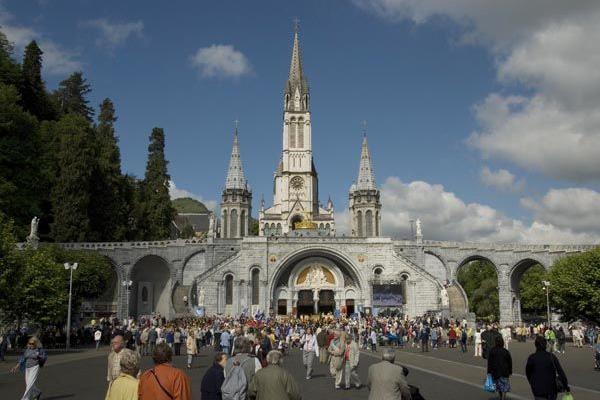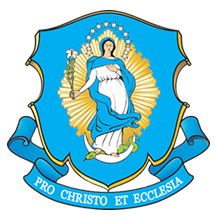
by Dan Valenti
What happened at Lourdes, France, and why there, of all places?
Let's start with the second question first. Today, we think of Lourdes as the most visited Catholic shrine in the world. But back in 1858, the ancient rock promontory shooting skyward from the ground just past the River Gave was literally a dump, used by townspeople as a place for trash.
The "Big Rock" ("Massabielle," as the locals called it) was a dank, dark place, hardly fitting for the Mother of God. The jutting rock face has two geological quirks: a grotto 26 feet deep by 37 feet wide, and, to the right of the grotto and above, a small niche.
The grotto's unsightly appearance and desolation kept most people away, including Bernadette Soubirous, 14, a poor peasant girl from Lourdes. She had heard of Massabielle but never went there.
That changed on Feb. 11, 1858 when she and two other girls - her sister Toinette and school chum Jeanne Abadie - went to the grotto looking for firewood. The girls separated, and Bernadette was alone in the grotto. Taking off her shoes and socks, she tried to cross the shallow water of the river.
She heard what sounded like a rush of wind, though the tree branches and bushes didn't move. After again hearing the same sound, she looked at the grotto. To her astonishment, she testified, "I saw a lady dressed in white, wearing a white dress, a blue girdle, and a yellow rose on each foot, the same color as the chain of her rosary."
Bernadette felt a "violent impression" until the lady took her rosary beads and made the sign of the cross. After that, she said, "I commenced not to be afraid."
The "lady" made a sign for Bernadette to approach, but the girl reported, "I stayed in the same place. Then, all of a sudden, she disappeared."
When Bernadette caught up with her companions, she asked if they had seen anything unusual. They answered no. Bernadette thought she had been mistaken. Realizing she alone had seen the mysterious figure, Bernadette asked her sister not to say anything to their mother, but Toinette couldn't hold her tongue. Upon hearing the story, Louise Soubirous gave the girls a beating and forbade them to go to the grotto again.
Of course, Bernadette went back to Big Rock, driven by an interior impulse. There, on Feb. 14, the "small, young lady reappeared." In the third appearance, the "lady" spoke for the first time. It was not until the 16th of the eventual 18 apparitions that the "lady" revealed herself to be the Immaculate Conception.
The events at Lourdes had an enormous impact in strengthening the Catholic Church. Today, 6 million pilgrims of all faiths visit annually in search of healing. In 2008, the Jubilee Year, 8 million visitors are expected - in a place that was once a dump.
Snippets of Lourdes
The Water - Most of the millions of annual pilgrims visit Lourdes for the water, believing the springs contain healing properties. The waters bubble up from a spring that appeared during the apparitions to St. Bernadette Soubirous in 1858. A scientific analysis revealed the water is potable. It is made up of oxygen; nitrogen; carbonic acid; carbonates of lime, magnesia, and iron; silicate; chlorides of potassium and sodium; small amounts of sulphates of potassium and soda; and traces of ammonia and iodine.
The Healings - Since 1858, more than 7,000 people have come forward to report healings from the waters of Lourdes, hoping to have the Church proclaim a miracle. In conjunction with the Catholic Church, the Lourdes Medical Bureau examines all cases. Of the 7000-plus, 67 are recognized as scientifically inexplicable, that is, miraculous. That's an average of one every 14 months.
The Statue - The statue that rests in the niche at the grotto was created by French sculptor Joseph Fabisch in 1864. It has become the iconic image of Our Lady of Lourdes. It's interesting to note that when Fabisch unveiled his work, Bernadette expressed great disappointment in the statue. It recalls St. Faustina's dismay when she first saw the painted image of The Divine Mercy, the "Vilnius" image.
















